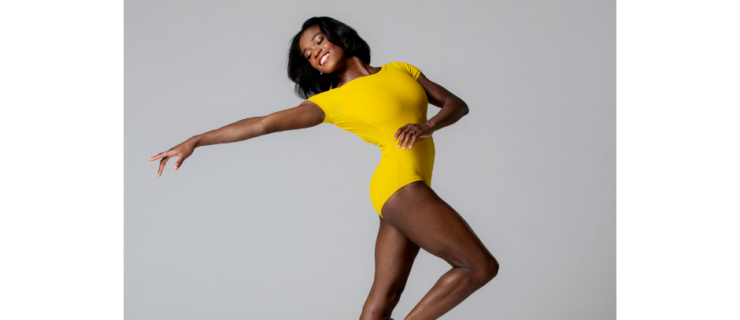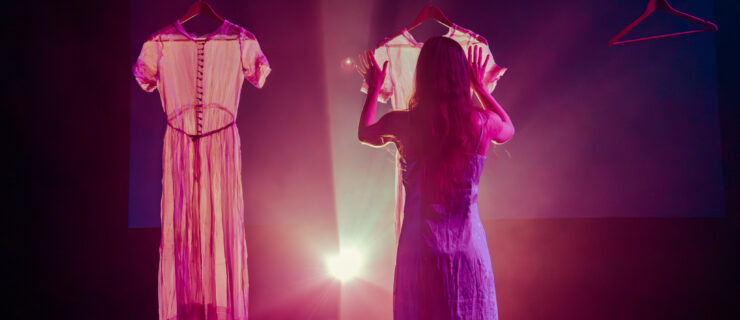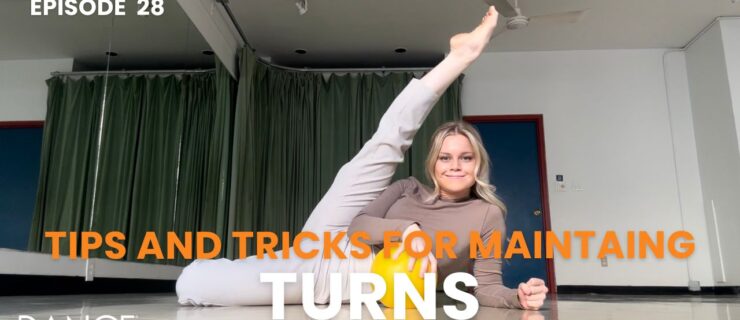Want More Turnout? Here Are Our 9 Top Tips
Perfect turnout may be the Holy Grail of ballet technique: It’s that forever elusive treasure we all seek but never seem to find.
No matter how much rotation you currently have, you could likely find more—if you use the right strategies. We dug into the Dance Magazine archives to round up our best tips from master teachers and dance medicine experts to help you reach your maximum turnout potential.
Know your anatomy.
According to Gayanne Grossman, director of dance wellness at Muhlenberg College, turnout comes from three places: “The hip can contribute anywhere from 36 to 58 degrees, the tibia in the lower leg can contribute 16 to 60 degrees and the foot about 15 degrees.”
These amounts will vary based on your bone structure. But more importantly, your muscular strength will determine how much of that rotation you will actually be able to use. “According to the research, most dancers are unable to access 15 to 30 degrees of their turnout per leg simply because their muscles are too weak,” writes Grossman. It’s not that you don’t have the turnout—it’s that you’re missing the strength you’d need to hold it.
A dance medicine specialist can measure how much turnout your body is potentially capable of, and how much you’re currently able to access based on your muscle strength.
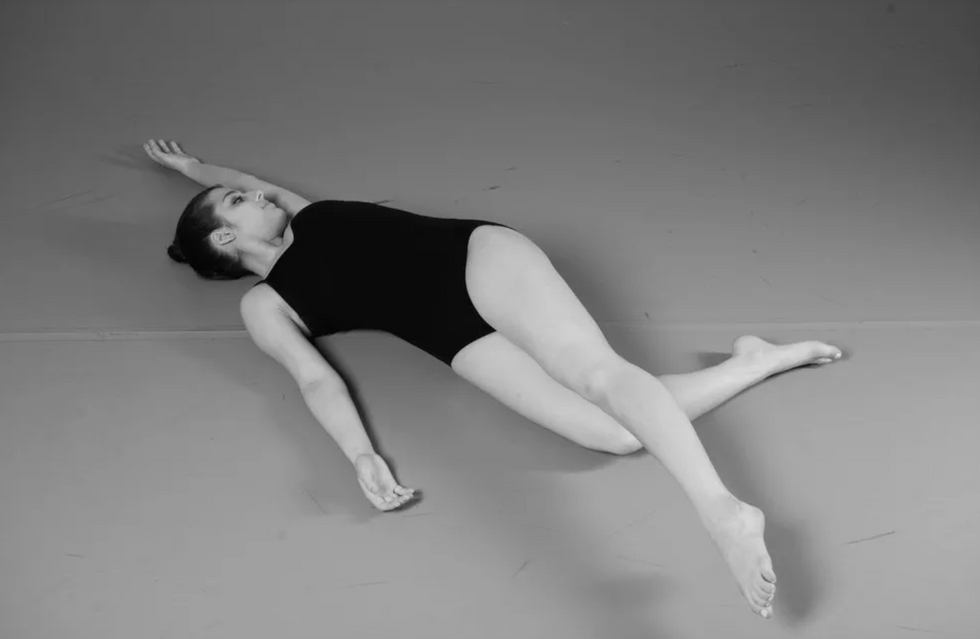
Courtesy Grossman
Find the ideal alignment.
When your hips are set up in the proper angle, your legs can more easily turn in their sockets. According to experts like Marika Molnar, founder of Westside Dance Physical Therapy in New York City, you can find the greatest range of motion when your pelvis is in a neutral position—the area in the front of your hips from the thigh to the pelvis should be flat.
Yet most dancers have a swayed lower back and forward-tipped pelvis due to tight IT bands, causing the legs and feet to roll in. You can correct this by stretching your IT band and strengthening your glutes.
Strengthen your rotator muscles.
There are six deep rotator muscles (located under the gluteus maximus) that are responsible for turnout. One exercise that can strengthen them is the famous clamshell:
- Lying on one side with your legs bent at the hips and knees, keep your feet together and open your top knee up as far as it will go—like a clamshell.
- Focus on rotating from the hip rather than just separating the knees. It’s a small movement, but you should feel the burn right where your glutes meet your thigh on the side.
- For extra resistance, tie a TheraBand around your thighs.
Practice on turnout discs.
Sarah Edery-Altas, DPT, OCS, at the Harkness Center for Dance Injuries at NYU Langone Health, says the first thing she recommends for dancers struggling with rotation is turnout discs. “They’re pretty much an ideal therapist to practice maintaining your lower extremity and pelvic alignment while specifying those deep external rotators and then working within the confines of where you are that day.”
If you’re on a budget, make your own discs with a couple of towels or soft socks to get the same frictionless effect.
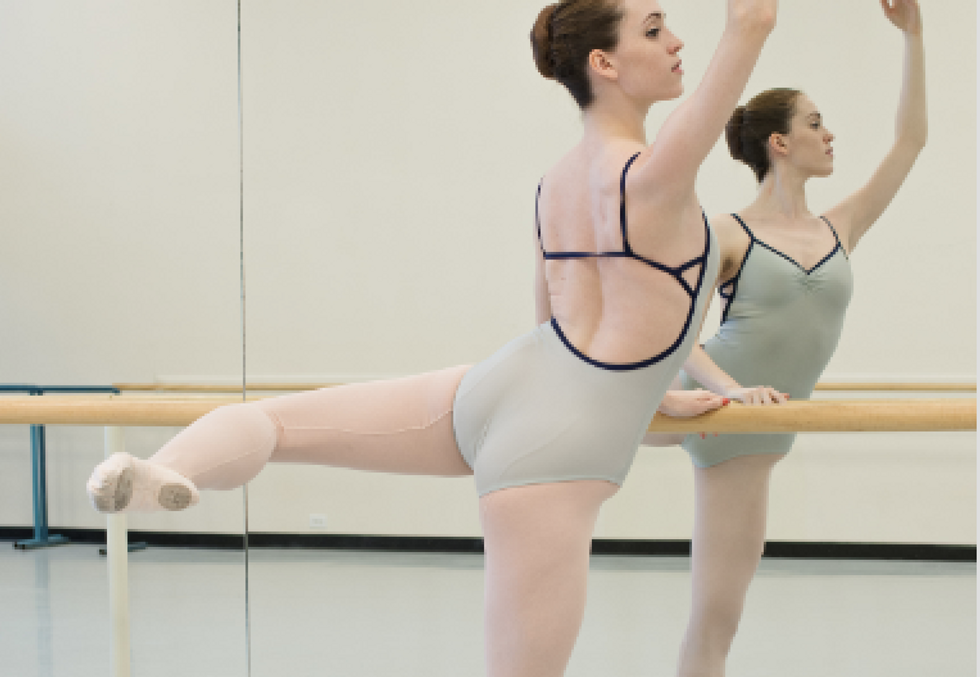
Take advantage of visualization.
The right image can help you activate the proper muscles. Find what works best for you.
Susan Jaffe recommends
her students at University of North Carolina School of the Arts imagine their thigh muscles wrapping around the bones, activating the muscles surrounding the hamstring insertion in particular. “If you’re not engaging that little one-inch space of the buns, right above the hamstring, then you can’t get to the top of your turnout,” she says.
Master ballet teacher Ashley Tuttle suggests imagining that you’re turning on a faucet: “When you turn the knob, that’s how you want to turn your leg in your hip joint,” she says.
Engage the smaller, deeper muscles—not just the big ones.
Don’t just grip your glutes. “A lot of people think turnout comes from the butt,” says Molnar. “But the deep rotators are located more in the center of the body going outward towards the top of the greater trochanter. The bigger muscles—the buttocks, quads and hamstrings—are your moving muscles. But to correctly position your femur into the hip joint, the small, local muscles need to work.”
Remember rotation in motion, too.
We often think of turnout as something we do when standing in first or fifth position. But we need it for a lot more than that. “Some people put a huge emphasis on standing in turnout, but how often do we actually stand in fifth without moving?” Molnar says.
Practice everything from keeping your pelvis neutral to engaging the deep rotators while moving through motions like passé and développé. “Turning out is an activity, not a position,” says Irene Dowd, who teaches anatomy at The Juilliard School.
Hit record to spot your weaknesses.
Although a good teacher will let you know when you’re losing rotation, seeing it happen yourself can leave a lasting impression.
Film yourself
to see when you lose your turnout—maybe it’s right before a pirouette, or during petit allegro. Pinpoint your personal weak spots so you know when you’ll need to pay the most attention.
Don’t fall for the myth that you need perfect 180-degree turnout.
Torquing your knees and ankles to hit a perfect 180 can cause major damage: Kneecap subluxations, labral tears, strained ligaments, hip impingements and FHL trouble are only the start of a long list of issues that could shorten your dance career if you force your joints further than they’re supposed to go.
Bridget Quinn, MD, points out
that many ballet dancers don’t have perfect turnout anyway—yet they still have brilliant careers: “They dance,” she says, “and we never notice their turnout.” A study done at The Australian Ballet found no difference in the degrees of turnout between principals and corps members.
While better turnout can give you cleaner lines and help you achieve certain feats like high extensions, the biggest mistake of all would be letting your quest for 180 keep you from really dancing.

